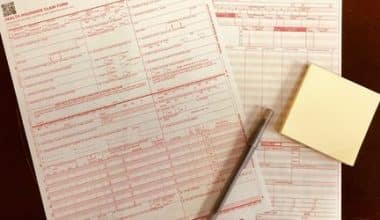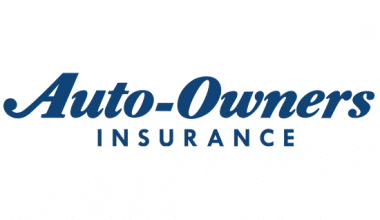Errors and omissions (E&O) insurance is a type of professional liability insurance that protects businesses and professionals from claims of negligence or mistakes. It is also known as professional liability insurance or malpractice insurance.
E&O insurance is especially important for businesses and professionals that provide professional services, such as accountants, lawyers, doctors, and architects. It can also benefit businesses that offer other services, such as contractors and consultants.
This article will discuss what E&O insurance is, why it is important, and what it covers. We will also provide other crucial information and questions about error and omission insurance.
What Is Errors and Omissions Insurance (E&O)?
E&O insurance is a type of professional liability insurance that protects businesses, their employees, and other professionals from claims of inadequate work or negligent actions.
Examples of E&O Insurance Claims
Here are some E&O claim examples:
- A real estate agent fails to disclose important property information.
- The strategy of a public relations firm results in a PR disaster.
- A marketing consultant gives advice that leads to revenue loss.
- A tax preparer makes a mistake, resulting in a penalty.
- A contractor does not finish a project on time.
Errors and Omissions Insurance: What You Need to Know
It is common for professionals who provide services to face claims brought by their clients. As a result, they require professional liability insurance (PLI) to protect themselves against such claims. Misrepresentation, malpractice, or negligence are all covered under PLI. One type of PLI is errors and omissions (E&O) insurance, which protects against claims of negligent or inadequate work.
E&O insurance is required for all businesses and individuals who provide professional services or advice. Doctors, lawyers, financial planners, insurance brokers, engineering firms, and other professionals are examples. Claim settlements can be covered by E&O insurance up to the amount specified in the insurance contract. It usually includes court costs, which can be quite high.
For example, when calculating portfolio attribution metrics, an investment management firm made a mistake. It resulted in a poor asset allocation decision and, as a result, an investment loss. Clients may seek compensation from the firm for their losses. If the investment firm had purchased comprehensive E&O insurance, the insurance company would have covered the legal fees and damage settlements.
The industry, geographic location, revenue, business size, policy coverage limits, and other factors all have an impact on E&O insurance rates. Certain industries are more vulnerable to litigation costs than others. Construction firms, for example, typically face higher E&O insurance costs because their mistakes can result in much higher property damage losses.
And because large revenues usually come with a high risk of lawsuit and settlement cost, E&O insurance rates tend to be higher. Companies that provide adequate employee training and have a strong track record of avoiding claims can typically obtain lower E&O insurance rates.
What Does E&O Insurance Cover?
Depending on the insurance policies, the coverage of errors and omissions (E&O) insurance may differ slightly between insurance providers. E&O insurance, in general, covers work mistakes and oversights, allegations of negligence, undelivered services, and missed deadlines. Clients may attempt to recoup losses caused by work mistakes and professional errors. A financial planner making a mistake on the return rate of a financial product is one example.
When a company fails to meet the industry’s minimum standard, it can be accused of negligence. Even if no mistakes were made, a dissatisfied customer may accuse the company of negligence.
Undeliverable services occur when a taxation firm fails to make tax payments for its clients as specified in the service contract. Another example is an insurance agent who fails to provide adequate insurance coverage for a client.
Clients may suffer significant revenue losses if deadlines are missed. For instance, an advisor failed to deliver a private equity investor’s due diligence report on time. As a result, the investor was unable to make the bid. The E&O insurance would cover the costs if the investor filed a lawsuit.
What Does E&O Insurance Not Cover?
Customer injuries, employee injuries, contingent bodily injuries, employee discrimination claims, and damage to business or customer property are all covered by E&O insurance. Other types of professional insurance policies cover the claims.
General liability insurance covers customer injuries and property damage. Workers’ compensation insurance covers employee injuries. Product liability insurance covers unforeseen bodily injuries. Employee discrimination suits filed against the company are covered by employment practises liability insurance (EPLI). Furthermore, E&O insurance does not cover criminal prosecution or intentional misconduct.
Many E&O insurance policies exclude temporary employees, claims made in multiple jurisdictions, and claims made on work done before the insurance was in place. When signing an E&O insurance contract, businesses must understand the policy terms and coverage.
Who Needs E&O Insurance?
In certain states and where licencing boards require it, you must purchase errors and omissions insurance. More than ten states, for example, require real estate agents to show proof of errors and omissions coverage before receiving their real estate licences.
Aside from real estate agents, here is a list of businesses that can benefit from professional liability insurance.
- Accountants
- Advertising firms
- Visual Arts Designers
- Interior designers
- Business and management consultants
- Tax preparers
- Technology experts
- Travel brokers
Is Errors and Omissions Coverage Necessary?
Certain professions, such as attorneys, medical professionals, contractors, and real estate agents, may be required to carry E&O insurance. These requirements differ depending on the state and profession.
Even if your state does not require E&O insurance, it is still worth considering. Without this coverage, you could face significant out-of-pocket expenses if you are sued for a mistake.
What Is the Cost of Errors and Omissions Insurance?
According to Insureon, errors and omissions insurance costs an average of $61 per month. That works out to $735 per year. The exact cost varies according to profession and risk.
According to Insureon, slightly less than a third (32%) of small business owners pay less than $50 per month, 39% pay between $50 and $100 per month, and 29% pay more than $100 per month.
Where Can I Get Errors and Omissions Insurance?
If you already have a business owners policy (BOP), you can usually supplement it with errors and omissions insurance. This is usually less expensive than purchasing a separate policy. However, you can also compare errors and omissions insurance quotes from various companies. Here is a list of E&O insurance providers.
- Acuity
- Allianz
- Allstate
- AmTrust Financial
- Auto-Owners
- Axis Insurance
- Berkshire Hathaway
- Chubb
- Cincinnati Insurance
- Clear Blue Insurance Group
- CNA
- Frankenmuth Insurance
- Geico
- Hiscox
- Liberty Mutual
- Markel Insurance
- Nationwide
- Next Insurance
- Progressive
- State Farm
- The Hanover
- The Hartford
- Tokio Marine
- Travelers
- Westfield Insurance
How Does Errors and Omissions Insurance in Technology Work?
Technology errors and omissions insurance can cover legal fees and other costs incurred as a result of customer claims. It’s E&O insurance for those working in technology.
Here are some examples of when technology E&O insurance would be useful:
The software you sold had bugs that corrupted a client’s billing information.
Because of a malfunction in the equipment you installed, a customer was unable to receive orders.
Your website appears to be too similar to a competitor’s website.
You missed critical deadlines while developing a new technology product, resulting in revenue loss.
You sold a client a product that caused their system to crash.
The following types of technology professionals may benefit from technology E&O insurance:
- Companies that manufacture computer electronic components
- Consultants in computer science
- Providers of Internet access
- IT consultants
- Software designers
- Website designers
What happens if my errors and omissions policy runs out?
Claims made against your company may be denied. Errors and omissions insurance is typically “claims-made,” which means that the policy must have been in effect at the time of the event and when the lawsuit is filed in order for the insurer to pay the claim.
What is the distinction between E&O and professional liability insurance?
Professional liability insurance is frequently used interchangeably with errors and omissions insurance. Which term is used depends on the industry. Legal and medical malpractice insurance, for example, are distinct types of professional liability insurance.
Is professional indemnity the same as errors and omissions insurance?
Errors and omissions insurance is also known as professional indemnity. It is a type of small business insurance that covers your legal expenses for claims of professional errors (such as incorrect advice), even if the claims are unfounded. This type of business insurance is also known as professional liability insurance.
What happens if my errors and omissions policy runs out?
If your errors and omissions policy expires, claims made against your company for professional mistakes made after the expiration date may be denied. That means you’d have to pay for any legal fees, judgements, or settlements yourself.
Some E&O policies include an extended reporting period that covers claims filed within a specified time frame after your policy expires, such as 30 to 60 days. If you file a claim after the extended reporting period, you will not be covered.
What does real estate errors and omissions insurance cover?
Errors and omissions insurance is a type of small business insurance that protects real estate agents and brokers against claims of professional mistakes, even if the claim is frivolous. This includes allegations of carelessness and failure to provide promised services.
If a client claims you failed to disclose termite damage, they may sue your real estate company. Your E&O insurance policy would cover your legal expenses.
What Is the Importance of Errors and Omissions Insurance?
A client may sue a financial professional if they suffer a loss as a result of an error or omission made during the application, consultation, or investment decision process. Legal fees and any damages awarded to the client are covered by E&O insurance.
Is E&O insurance expensive?
E&O costs will vary depending on a number of factors, including the nature of the business, the size of the company, and the company’s claims history. E&O can average between $500 and $1,000 per employee per year.
Is E&O Coverage the Same as Liability Coverage?
Professional liability insurance and E&O insurance are the same thing. E&O insurance, on the other hand, is distinct from general liability insurance. E&O insurance covers mistakes made during the course of a business’s operations, whereas general liability insurance covers claims for bodily injuries or property damage caused by the company’s products.
Conclusion
E&O insurance is a type of coverage that protects a company from mistakes made during the course of business. When a company legitimately fails to meet a deadline, makes a material omission, makes a professional oversight, or engages in professional negligence, the injured party may sue the company. The company may have insurance coverage to cover legal and damage costs in these cases.
- What Is A Trial Balance In Accounting?
- PROFESSIONAL LIABILITY INSURANCE COMPANIES: 7+ Best Liability Insurance Companies
- 5 Social Media Managing Mistakes You Might Be Making
- What is Liability Insurance: Types and Coverages for Your Business






